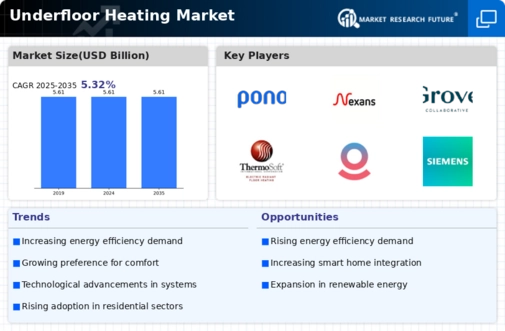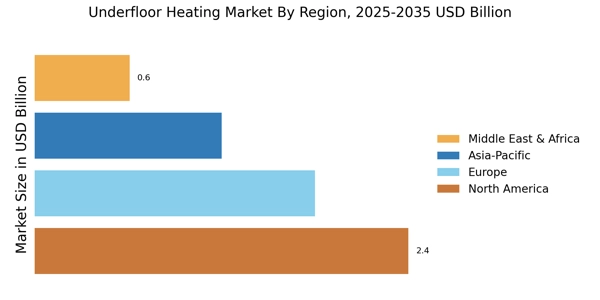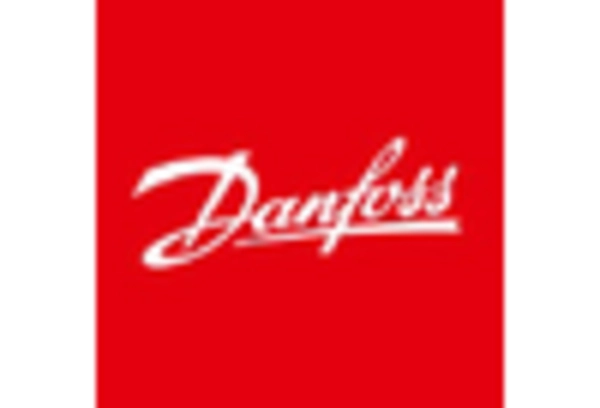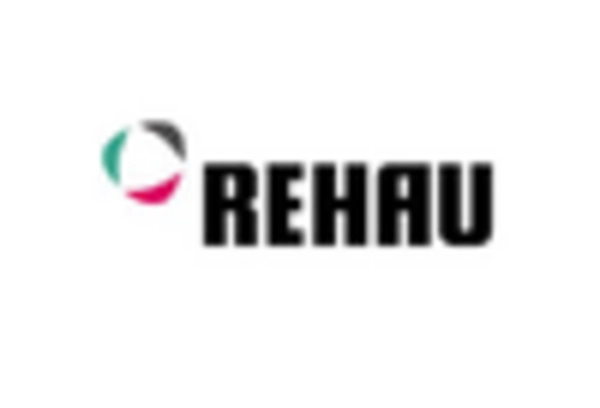Energy Efficiency Demand
The increasing demand for energy-efficient heating solutions is a primary driver for the Underfloor Heating Market. As consumers and businesses seek to reduce energy consumption and lower utility bills, underfloor heating systems, which provide uniform heat distribution, are becoming more appealing. According to recent data, underfloor heating can reduce energy usage by up to 30% compared to traditional heating methods. This efficiency not only contributes to cost savings but also aligns with broader environmental goals, making it a preferred choice among eco-conscious consumers. The Underfloor Heating Market is thus witnessing a surge in adoption as energy efficiency becomes a critical factor in purchasing decisions.
Technological Advancements
Technological advancements in heating systems are transforming the Underfloor Heating Market. Innovations such as smart thermostats, wireless controls, and energy-efficient heating cables are enhancing the functionality and appeal of underfloor heating solutions. These technologies allow for precise temperature control and integration with home automation systems, making underfloor heating more user-friendly and efficient. As consumers increasingly seek modern and convenient heating solutions, the market is likely to expand. Furthermore, the introduction of new materials and installation techniques is expected to reduce costs and improve performance, further driving the Underfloor Heating Market forward.
Rising Construction Activities
The resurgence in construction activities across various sectors is significantly propelling the Underfloor Heating Market. With urbanization and population growth driving the need for new residential and commercial buildings, the demand for advanced heating solutions is on the rise. Recent statistics indicate that the construction sector is expected to grow at a compound annual growth rate of approximately 5% over the next few years. This growth is likely to lead to increased installations of underfloor heating systems, as builders and developers recognize the benefits of these systems in enhancing property value and occupant comfort. Consequently, the Underfloor Heating Market is poised for substantial growth.
Increased Awareness of Health Benefits
The growing awareness of the health benefits associated with underfloor heating is influencing the Underfloor Heating Market. Unlike traditional heating systems, underfloor heating minimizes dust circulation and allergens, creating a healthier indoor environment. This aspect is particularly appealing to families with children or individuals with respiratory issues. As more consumers become informed about these health advantages, the demand for underfloor heating systems is likely to rise. Additionally, the comfort provided by warm floors during colder months enhances overall well-being, making underfloor heating an attractive option for many. This trend is expected to contribute positively to the Underfloor Heating Market.
Government Incentives for Energy Efficiency
Government incentives aimed at promoting energy efficiency are playing a crucial role in the Underfloor Heating Market. Various regions are implementing policies and financial incentives to encourage the adoption of energy-efficient heating solutions, including underfloor heating systems. These incentives may include tax credits, rebates, or grants for homeowners and businesses that invest in energy-efficient technologies. As a result, the financial burden of installation is alleviated, making underfloor heating more accessible to a broader audience. This supportive regulatory environment is likely to stimulate growth in the Underfloor Heating Market, as more consumers take advantage of these incentives to upgrade their heating systems.


















Leave a Comment